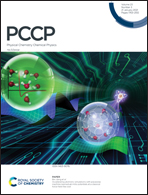Transport mechanisms in Co-doped ZnO (ZCO) and H-irradiated ZCO polycrystalline thin films
Abstract
In the present study, the electrical resistivity (ρ) as a function of the temperature (T) has been measured in polycrystalline ZnO, Co-doped ZnO (ZCO) and H irradiated ZCO (HZCO) samples, in the 300–20 K range. The achieved results show impressive effects of Co doping and H irradiation on the ZnO transport properties. The Co dopant increases the ZnO resistivity at high T (HT), whereas it has an opposite effect at low T (LT). H balances the Co effects by neutralizing the ρ increase at HT and strengthening its decrease at LT. A careful analysis of the ρ data permits to identify two different thermally activated processes as those governing the charge transport in the three materials at HT and LT, respectively. The occurrence of such processes has been fully explained in terms of a previously proposed model based on an acceptor impurity band, induced by the formation of Co-oxygen vacancy complexes, as well as known effects produced by H on the ZnO properties. The same analysis shows that both Co and H reduce the effects of grain boundaries on the transport processes. The high conductivity of HZCO in the whole T-range and its low noise level resulting from electric noise spectroscopy make this material a very interesting one for technological applications.



 Please wait while we load your content...
Please wait while we load your content...